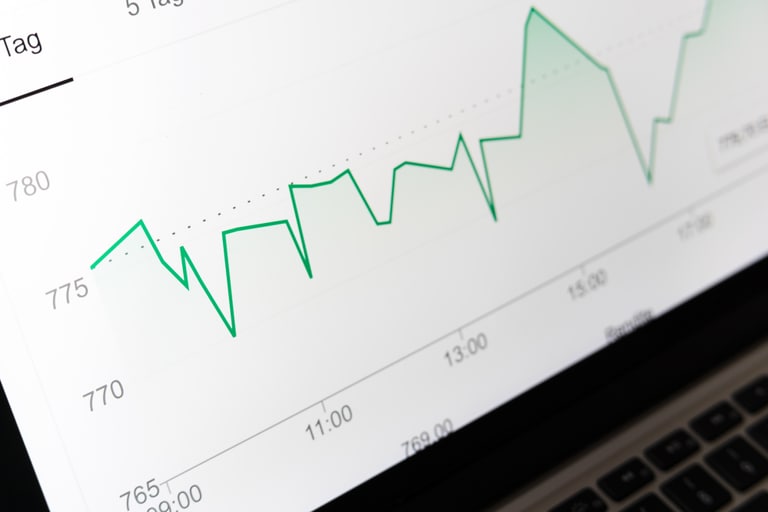To get the best understanding of a traffic spike, you will need to investigate the following questions;
- When exactly did the spike occur?
- From where did the majority of users come from?
- On which page did users land first?
- What did they do on your website?
These questions are important to answer even if you know exactly why this spike occurred. Perhaps you are running an advertising campaign and it ran on that particular day, or your company was featured on a popular blog the day before. Even though you know why there was this traffic spike, it's crucial that you review it in detail. The reason is that in the future you can be prepared and optimize content so that this spike in traffic also creates a spike in conversions.
When exactly did the spike occur?
Spikes might not always be super clear to see if you are looking at a short time period. The first technique I would recommend is to view the trend in your total user and pageview data from the last 30 days. Also be aware that these spikes might be as short as a day but as long as a week. Play around with the granularity of your data (if possible) by going from a breakdown of pageviews and total users per hour, per day and per week. You might notice that the spike is more visible when only looking at the total number of pageviews, in this case removing users - and vise versa. This should allow you to identify exactly when the spike started and ended.
Once you have identified exactly when the spike occurred , verify your hypothesis by comparing that spike period with a previous period. Ensure that if you do not compare apples and oranges. For example, your spike occurred on the weekend, make sure you compare a similar weekend not too far in the past.
From where did the majority of users come from?
With your exact spike period confirmed, head over to your acquisition reports to identify the most popular sources and mediums used to access your website. If you know a campaign could have had something to do with it, try to identify which campaign it was. Check out the website referrals to see if any single website was connected to this traffic spike and thoroughly review the data by adding a comparison period. This comparison period should give you a clear indication for which sources were considerably more popular and which did not experience much change.
Something that I have seen before in our clients data is that “direct traffic” was a main contributor to the traffic spike. Unfortunately, in this case, you will not be able to dig any deeper and you will have to reverse engineer the user journey by reviewing the spikes in landing pages. To reduce “direct traffic” you can try using UTM parameters. More information on that see, my blogpost: https://www.liip.ch/en/blog/how-do-i-track-my-campaigns
On which page did users land first?
When reviewing your landing page report, you should follow the same process as before. View it simply during the spike time period and then add the comparison period and see if any pages were more popular. If your campaign used a specific landing page, you can also try to search for it and see if there was any change. If you have a Google Search Console Account it might also be worth reviewing the impressions received during that period and if you want to go even deeper, check out if any of your keywords were different.
If the majority of the traffic spike occurred on your homepage, it might be worth creating some specific landing pages for those users arriving during a campaign or from another website. Not only will you be able to better identify those users arriving through that landing page, but your content can also be more tailored to those users coming to your site.
What did they do on your website?
Last but not least, it is important to identify what exactly your users did during this spike. Were they coming to view a newly published document, to register for an upcoming event or simply to read a new article. Make your comparison to a similar period to identify which events tracked on your website received more hits. Start at pages visited and hopefully you will also see an impact on total events completed and goals converted.
Ideally, if you received more traffic on the website then you would expect more events and conversions. If this was not the case, it might be a good idea to redefine some of your events or review specific user journeys to identify why these events did not increase.
I hope after reviewing these questions that you are able to better understand your traffic spikes and more importantly act on them for future campaigns, content optimisations and features. If you are curious to have our opinion on one of your traffic spikes or generally need support when evaluating campaigns, feel free to reach out!

